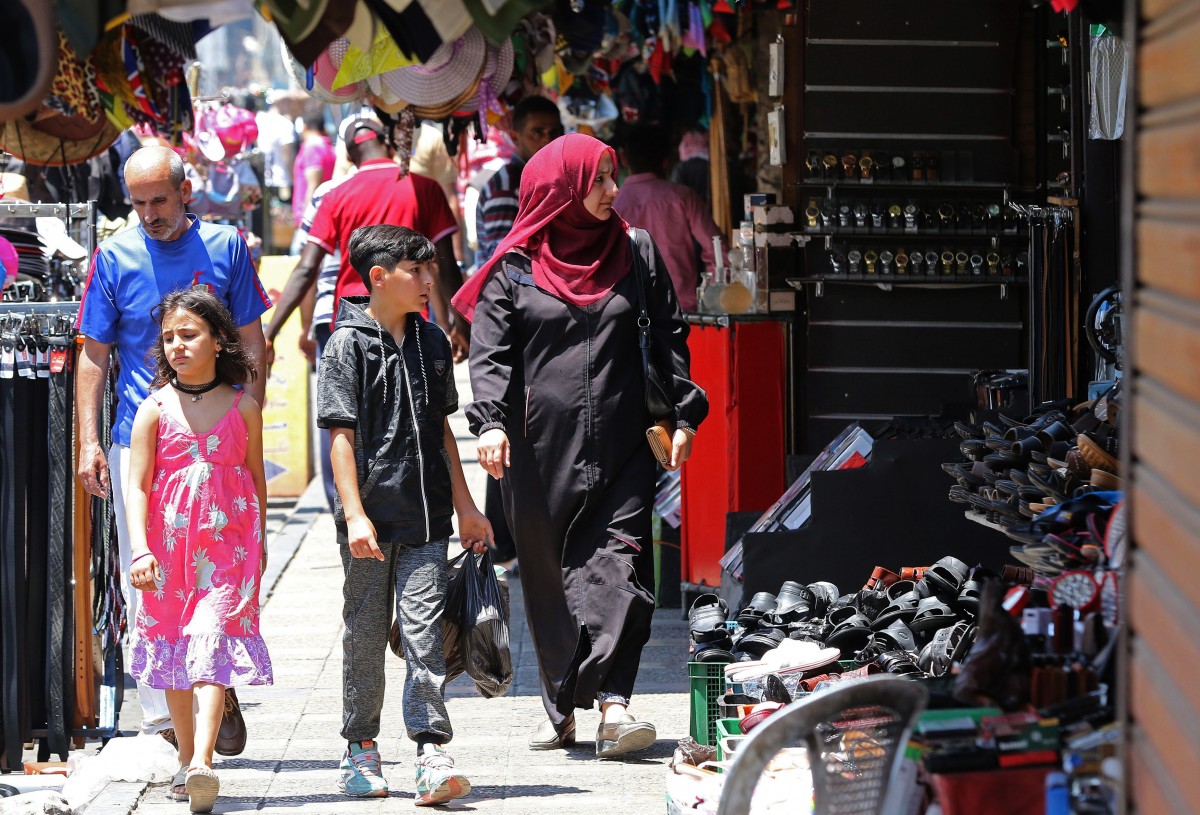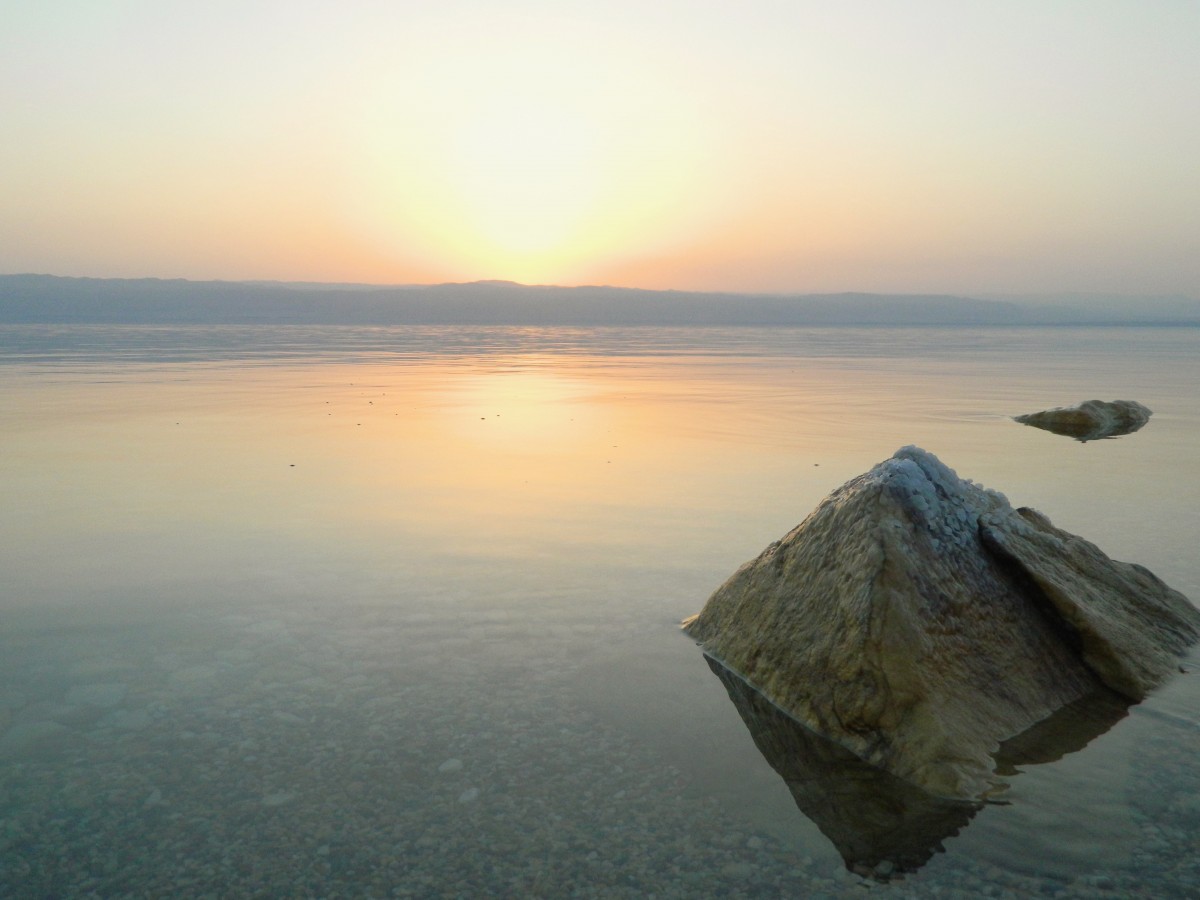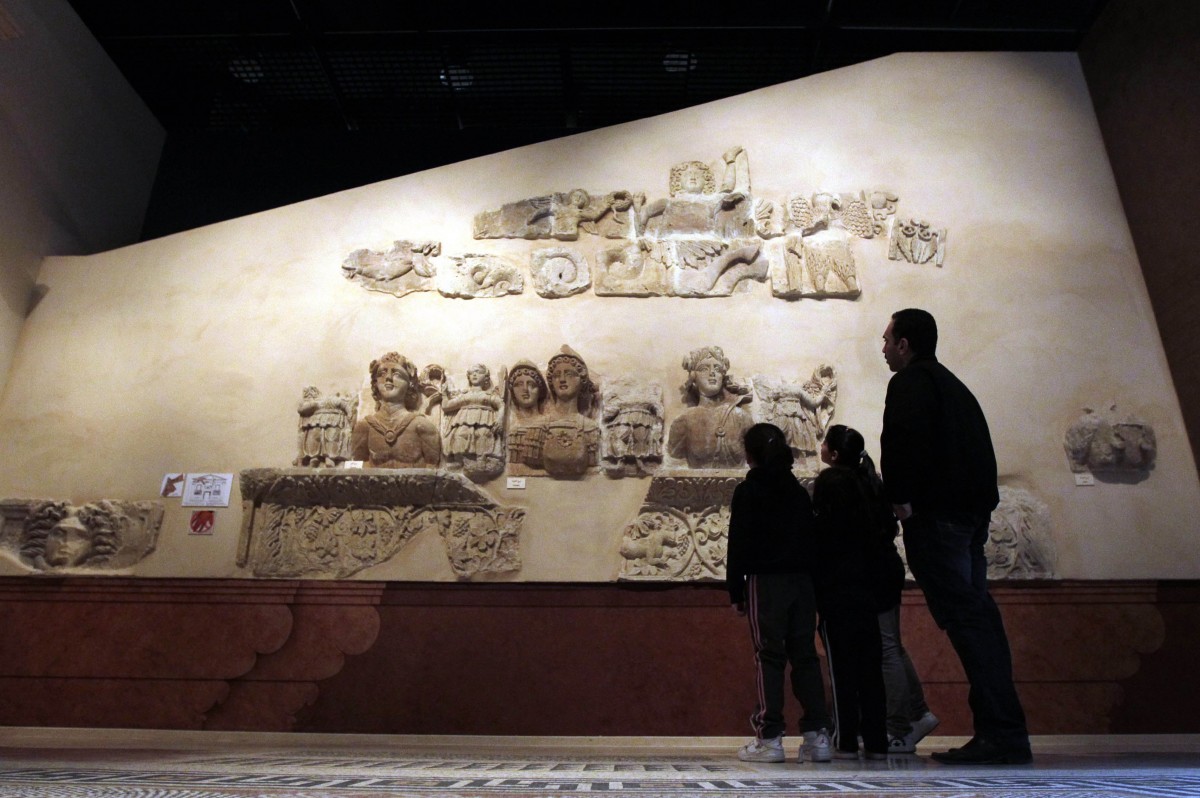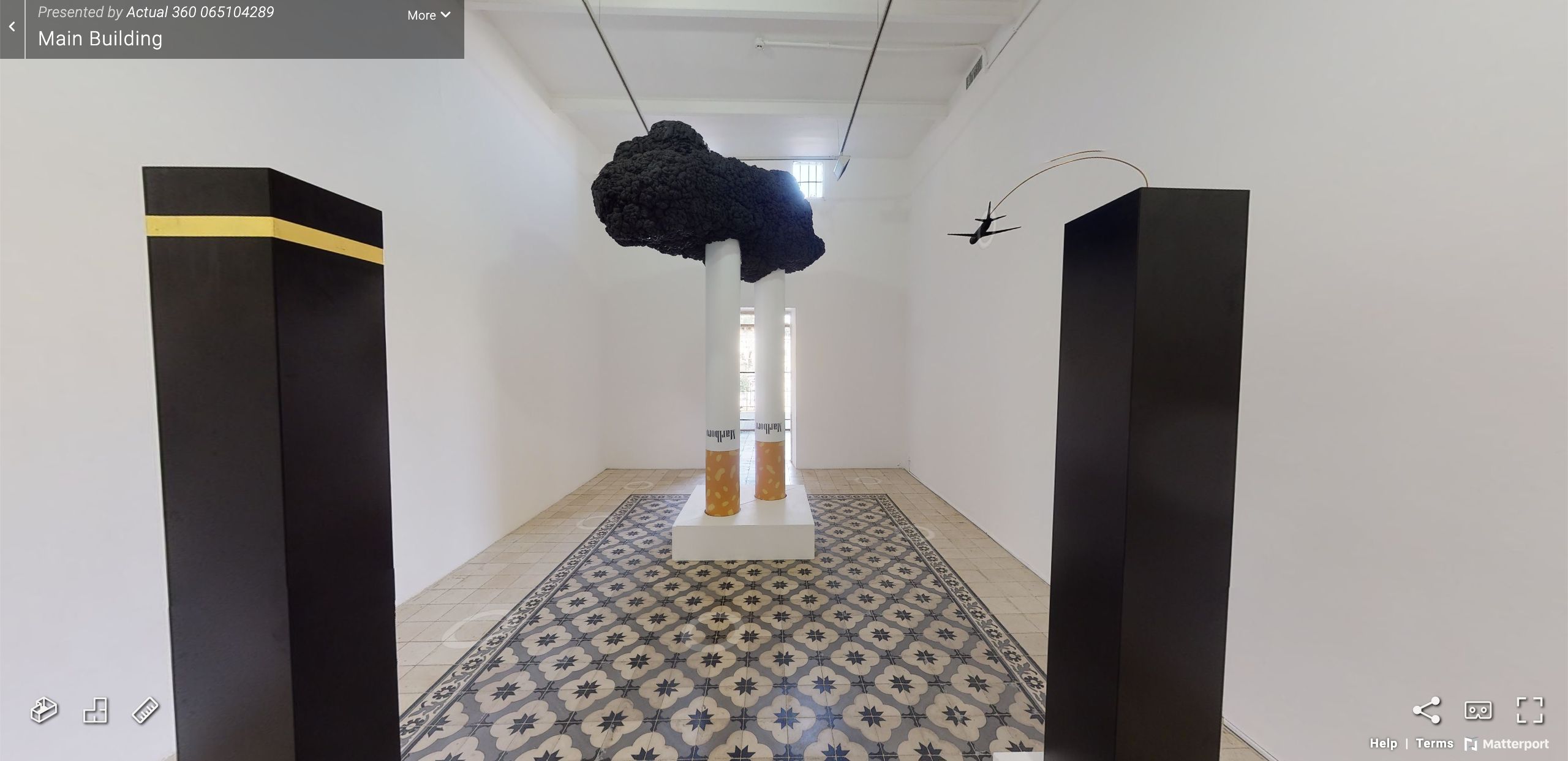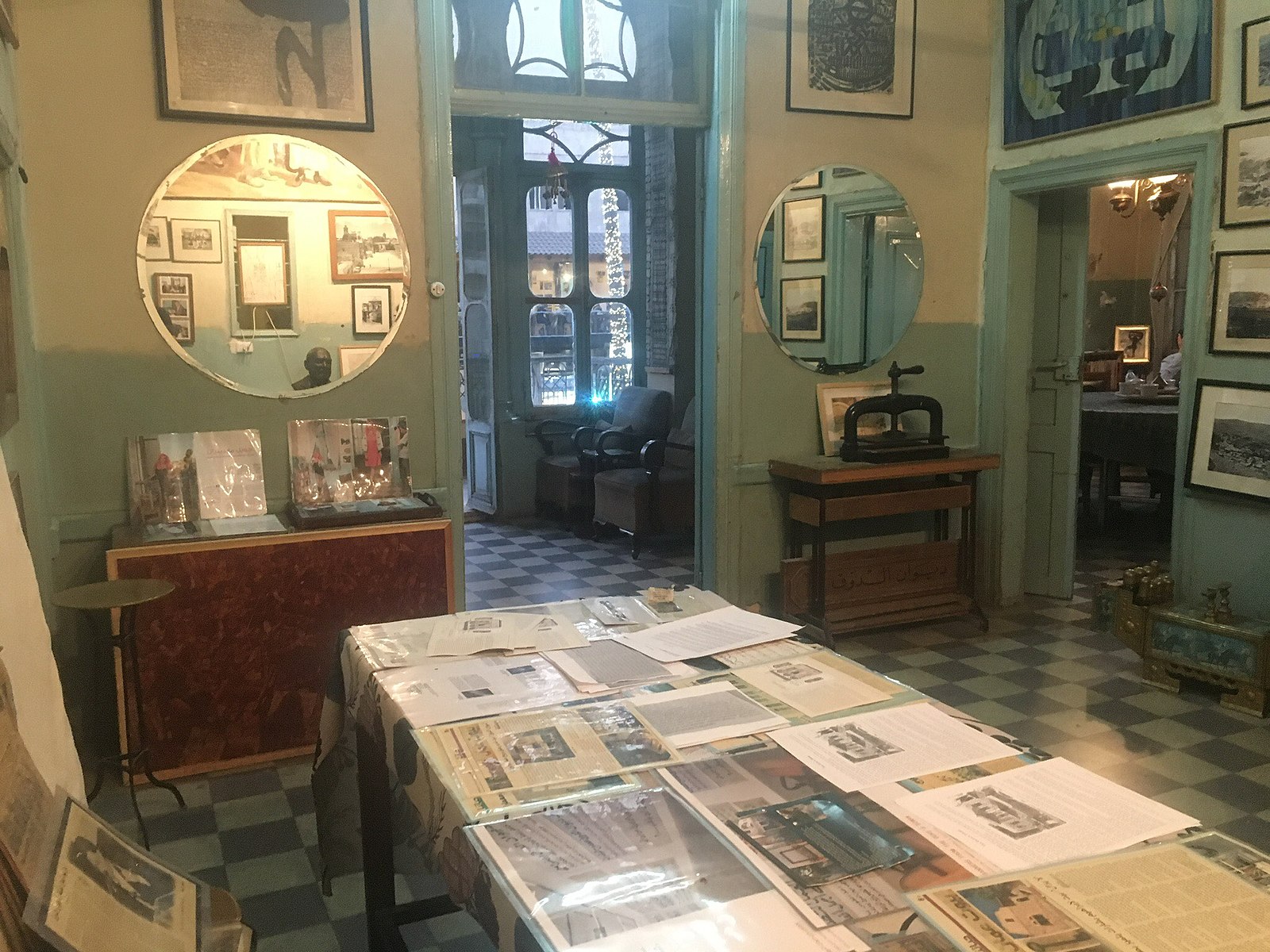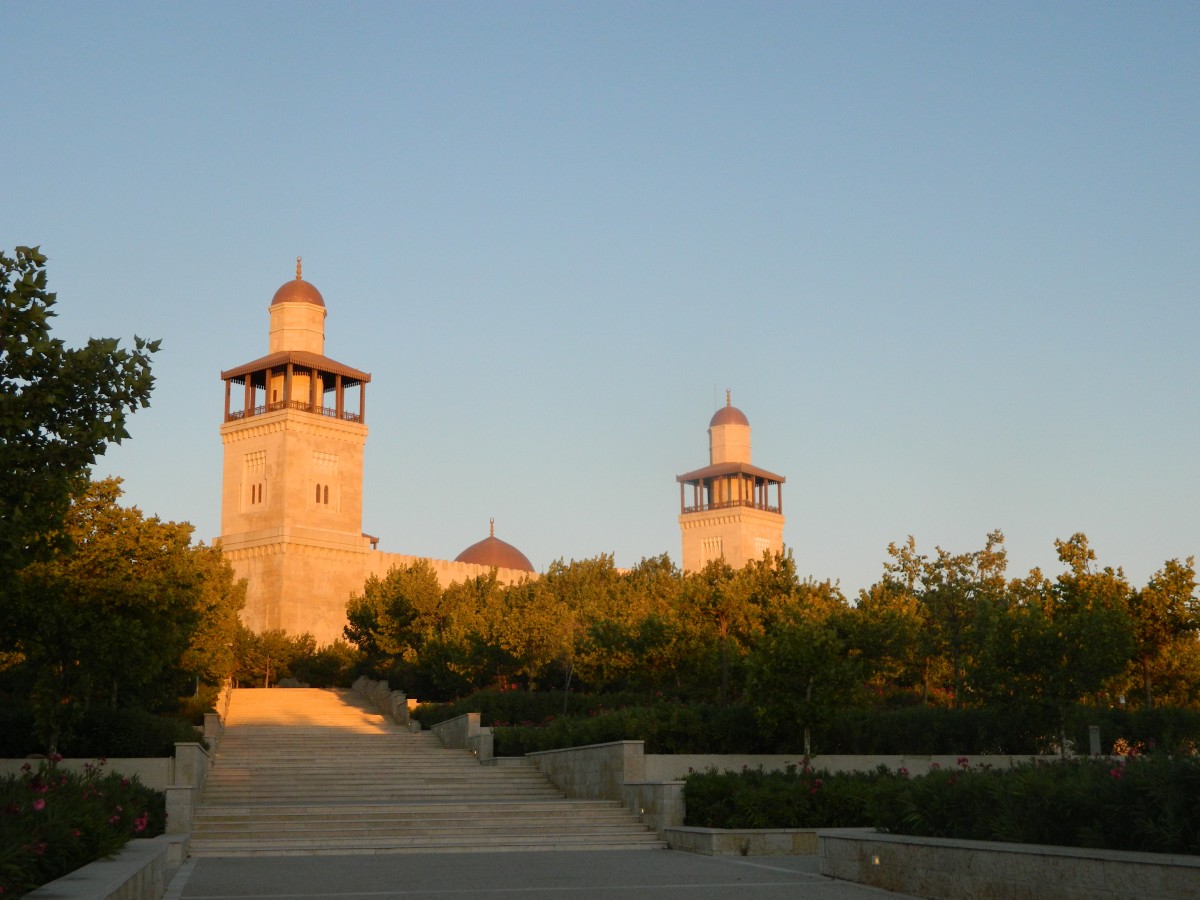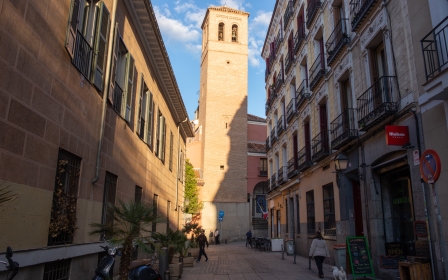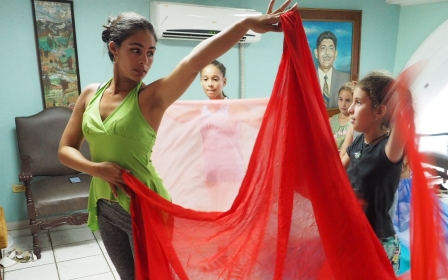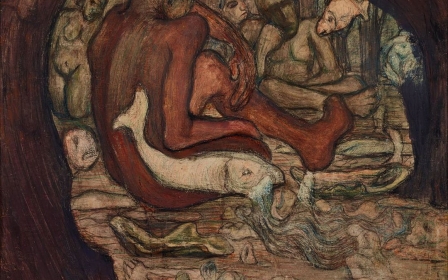Ten places to visit in Jordan from the comfort of your own home

Right now, you could be standing in a sandy clearing between towering walls of red rock. Crane your head to look up and you’d see an imposing monument carved into the sandstone, supported by six tall pillars etched in intricate designs. This, of course, is the ancient treasury in the city of Petra - and you don’t actually have to be there to experience it.
With a few clicks on a mouse or keyboard, you too could witness the expansive sunset views at the Dead Sea, the lowest place on Earth, and roam around the diverse and bustling markets of downtown Amman.
Jordan’s rich blend of culture, history and scenery has long been a draw. Several civilisations have come and gone over the centuries, the distinct influences of which can still be felt today. Jordan played a key role in the powerful Umayyad empire in the early seventh century and has historically been home to the Nabateans, Egyptians, Ottomans, Romans and Greeks.
With tourism contributing around 19.2 percent of Jordan’s GDP in 2018, the sector is a key driver in the country’s economy. The global pandemic brought most international travel to a halt a few months before peak tourist season. Although Jordan’s airports have just started opening again after a six-month closure, restrictions and quarantine requirements for all arrivals remain strict; a nightly curfew also remains in place across the country.
Since lockdown was eased in Jordan in early June, the tourism industry has been forced to find ways to adapt, by offering virtual tours
Jordan’s countrywide lockdown has been described as one of the strictest in the world. Movement between governorates was initially heavily restricted, with prison sentences of up to a year for breaking the defence orders passed into law in March.
While the kingdom has praised itself on its swift response and effective containment of the virus, it has also become practically inaccessible as a destination.
Since lockdown was eased in early June, the tourism industry has been forced to find ways to adapt, with some tourist sites like the ancient city of Petra cautiously reopening to a trickle of visitors. Meanwhile, many of the country’s tourist locations have been promoting existing virtual experience tools, while others used the halt in business as an opportunity to develop the technology.
The Jordan Museum released a virtual tour in mid-May this year, developed with the Jordan Tourism board during the lockdown, in direct response to the pandemic. Petra’s virtual tour, narrated by Queen Rania of Jordan, has been available since 2015 and was developed by Google Street View alongside 30 other historical sites in Jordan. Several sites are available to view through 360 degree tours on VRJordan and on the Jordan Tourism Board website.
Through Local Eyes, a small alternative tour organisation based in Jordan, unique for their focus on cultural discussion and meeting members of society not traditionally involved in tourism, has been working to make its tours accessible via online conferencing platform Zoom since the start of the pandemic. Founder Anas Amarneh takes guests on live tours using only his phone and one or two helpers for extra lighting and logistics.
For virtual visitors, there is something to gain, even over traditional tourism: they are now able to access sites usually restricted to foreigners or large groups. “Technology is giving us so much accessibility,” says Amarneh. “If I’m just with my mobile it’s easy for me to move.”
With the rise in global armchair travelling, MEE took a virtual tour of ten of the kingdom’s spectacular, and lesser known, sites.
1. The ancient city of Petra
An ancient desert city more than 2,000 years old, Petra is a Unesco World Heritage site famous for towering buildings carved into the red sandstone. One of the seven wonders of the world, it covers 264 square kilometres, an area more than twice the size of Manhattan. The city was built around the 1st Century BC, when it functioned as the capital of the Nabatean Empire and a hub for trade, before it was absorbed into the Roman Empire in 106 AD.
The virtual tour from Jordan’s tourism board and powered by Google Maps takes you on a walk through the city, with a map showing each key location where visitors can stop and explore the tombs, mountain rifts, ancient streets, theatre, monastery and treasury.
You can use the mouse to navigate the various sites and rotate the view, or click on points of interest to discover more about its history. The narration by Jordan’s Queen Rania starts as soon as you enter the tour or click on a new location.
While the treasury is Petra’s most iconic feature, visitors (virtual or otherwise) are not allowed inside. You can pass through to the Urn Tomb instead for a close-up view of the mottled red sandstone that once held burial chambers and later served as a Byzantine church.
Despite the high-resolution images covering a vast area of the ancient city, the virtual tour pales in comparison to actually walking the trails. It can be awkward to manoeuvre the various views with a mouse, and especially a laptop trackpad. Of course it’s also impossible to step back and admire the view from a distance, to breathe in the desert air or to hear the echo of your voice in the rock-formed corridors.
But even on a screen thousands of miles away, it’s difficult not to be mesmerised by the majesty, age and beauty of the ancient city.
2. Wadi Rum
One of the most popular tourist destinations in Jordan, Wadi Rum desert is famous for its red sand and otherworldly landscape. The Unesco World Heritage site is also characterised by its huge sandstone and granite jabals (meaning "mountains" in Arabic), many of them pockmarked with canyons and caves. Not surprisingly, Wadi Rum has featured in several films, including the Lawrence of Arabia epic in 1962 and the 2015 blockbuster The Martian.
Wadi Rum is the largest wadi, or valley, in Jordan, covering 720 square kilometres. Home to some of Jordan’s Bedouin population, there are many local tourist camps in the desert where visitors can sample Bedouin food cooked under the sand, known as zarb, take Jeep tours, camel rides or even go climbing.
The virtual visitor is slightly less spoilt for choice, however. While VRJordan’s "virtual tour" of Wadi Rum gives an insight into some of Rum’s spectacular scenes, it is more a series of 360-degree photos than an actual online tour. Visitors are unfortunately unable to navigate around the location aside from rotating the view, and there is no audio guide available.
Accessible images include Khazali canyon, with its ancient petroglyphs (rock carvings) featuring humans and antelopes and Thamudic, Nabatean and Islamic inscriptions. However it is not easy to locate the actual carvings on the virtual site. Visitors can also see one of the desert’s huge sand dunes and look at the view across to distant jabals over sunburnt sand.
It’s certainly not the same as racing down the same sand dune, watching the sun rise over the red Martian landscape, or standing face to face with a 2,000-year-old carving – but it may give visitors a taste of what they’re missing.
3. The Dead Sea
Located at the lowest place on Earth at around 400 metres below sea level, the landlocked salty lake is bordered by Jordan, Israel and the occupied West Bank, and fed mainly by the Jordan River to the north. Famous for its dense and mineral-rich water, the Dead Sea is almost 10 times as salty as ordinary seawater.
On location visitors can reach the Dead Sea from many different sites in Jordan - whether from a luxury resort, the less-costly Amman Beach, or simply by parking close to the Amman-Dead Sea Highway and taking a precarious off-road trek.
However, the Matterport-powered virtual tour offers only the option of the Panorama Dead Sea Complex - albeit at sunset - a complex that includes a restaurant, a gift shop and a museum run by the Royal Society for the Conservation of Nature.
Navigation is fiddly and there is no audio or text information, but if you manage to manoeuvre across to the Dead Sea Museum and angle the view just right, you can read most of the information boards on the walls tracking the history, archaeology, ecology and geology of the Dead Sea in both English and Arabic.
Here you can also discover how the Dead Sea Scrolls were reportedly discovered by a shepherd searching for his goat in 1947 in what is now the West Bank, and learn of the environmental impact on the shrinking water levels mainly caused by rising demands for water and irrigation.
The expansive views of the lake and its surroundings at sunset are a sight to behold even on a virtual visit, although you will miss the unparalleled feeling of weightlessness of swimming in one of the world’s saltiest bodies of water.
4. Al-Shoubak Castle
Built in 1115 AD by King Baldwin I of Jerusalem, Al Shoubak castle is a lonely sight, set on top of a hill in a rugged yet fertile landscape in south Jordan. Along with the larger Karak castle built in the same period, Al-Shoubak castle was of strategic importance in the early 12th century due to its location on the main passage from Egypt to Syria, a route taken by traders as well as those making religious pilgrimage to Mecca.
Previously named Mount Real or Mons Regalis, meaning Royal Mount, traders and pilgrims passing the castle were taxed for using the route; caravans were also later regularly attacked for the rich cargo they carried.
The castle fell to Ayyubid Sultan Saladin in 1189, after a two-year long siege which began with the capture of Jerusalem. During the siege, those defending the castle were reportedly forced to sell their wives and children for food, with some going blind due to a lack of salt.
Walk the stone steps and find yourself among the ruins on this virtual tour. Navigate under the old stone arches and into the semi preserved chambers before adjusting the view to look out over the sparse hilly landscape surrounding the site.
The virtual tour, also available on the country’s tourism ministry website, offers smooth and seemingly thorough navigation of the entire site, and is easy to manoeuvre on laptop and desktop computers. However, virtual visitors may be left somewhat stranded for the lack of information provided: no audio or text is provided to assist visitors.
While a real-life visit to the site may also stump tourists due to a general lack of plaques and information boards, the option of hiring a knowledgeable local guide makes an in person visit somewhat more appealing. Visitors from afar must do their own research if they wish to learn for themselves about the rich history of Shoubak and its various occupiers.
5. Jordan museum
Located in downtown Amman, the Jordan Museum is the kingdom’s national museum. The largest in the country, it is a cultural, historical and educational hub covering 1.5 million years of history in the region. Exhibitions include three main areas: “Living History,” “Modern Jordan” and an Archaeological and Historical Gallery.
Highlights from its 2,000 plus artefacts include the late Chalcolithic infant remains in a burial jar, the oldest known human statues, and a portion of the Dead Sea Scrolls. The museum also holds exhibitions about present day issues, such as Jordan’s ongoing challenge with water shortages and efforts to overcome this.
The virtual tour was launched 11 May, when the country was in lockdown. It is the result of a collaborative effort by the museum, the Ministry of Tourism and Antiquities and the Jordanian Tourism Revitalisation Authority.
By selecting the Highlights and Tags options in the corner of the screen you can skip across the various rooms, or explore as you go along by moving through each room using a mouse or trackpad.
Search “infant burial in a jar”, “oldest large-scale statue in the world” and “dead sea scrolls” in the Tags option to view these three ancient and famous artefacts, without having to first navigate through half of the museum.
There is no audio guide on this virtual visit, and it can be difficult to find the exhibition you want, without a clear list to select from, but information is available in text boxes highlighted by small orange circles above each artefact or display.
6. Darat al-Funun
A heritage house built in 1988, Darat al Funun - meaning “house of the arts” - has been supporting Jordanian and international artists from its inception. Based in the old neighbourhood of Al-Weibdeh, the house is run by the Khalid Shoman Foundation and comprises of six historical buildings. It contains contemporary art works and a restored archaeological site in the garden, and is a popular venue for film screenings, poetry readings, cultural events and concerts.
Since closing its doors on 16 March due to the lockdown, Darat al-Funun is instead available to visitors through an online exhibition called The Internet of Things: Another World is Possible, and a 360-degree virtual tour.
The tour, which was in place before the pandemic, allows online access to Darat al-Funun’s several historic buildings over two storeys, which host contemporary exhibitions, as well as a museum and a library in airy spaces filled with natural light. The main building hosts two exhibitions, one by Turkish-Ukrainian artist, Nadia Kaabi-Linke, the other by Jordanian artist Raed Ibrahim, which “each reflect on the precariousness of shifting political, economic and social constructs at the start of this new decade”.
Ibrahim’s A Camel in the Room, partly hosted in the main building, features two oversized Marlboro cigarettes with a large black smoke-like structure covering them both, as part of a four-part installation commenting on the impact of 9/11.
One of Kaabi-Linke’s works, Das Kapital-Epilogue, the title a reference to Karl Marx’s Das Kapital, features a large pile of rocks partly propping up a precariously positioned black metal fence, a comment on free-market capitalism and morally corrupt regimes.
Some of the virtual tour is very innovative - Kaabi-Linke’s video exhibit "NO" (featuring a church congregation responding to a disembodied mouth asking if they have been refused a visa to the UK), will automatically play on YouTube when visitors run the mouse over the wall projection in the virtual version.
However, information about the exhibits is only available to read on the plaques situated throughout the galleries - sometimes the text is just too small to read and there is no audio description to turn to.
7. The Duke’s Diwan
Built in 1924, this heritage house was Amman’s first post office; it also functioned briefly as the finance ministry and then a hotel, before finally being saved from demolition when it was rented in 2001 by Mamdouh Bisharat, the "Duke of Mikheibeh".
Bisharat has since transformed the house into the public space for art works, cultural artefacts and music performances that it is today. A space in the heart of downtown Amman for thinkers, intellectuals, artists and tourists, it is rammed with collectibles that, along with the building itself, offer a glimpse into the country's rich heritage.
In 2015, the venue held a concert from its balcony for downtown shoppers passing below, performed by Tajalla, a then-fledgling cultural and artistic society. According to local media, the performance was intended to connect city residents with the heritage of the old buildings in Amman, and took passing locals by surprise.
On the virtual tour of the heritage house, visitors will first find themselves in the hallway, leading to the main room of the Diwan. After navigating into the main room with the mouse, visitors can explore a collection of historical photos of Amman taken in the 19th and 20th centuries, as well as the house’s large book collection on display in the adjoining rooms.
The photographs exhibited include an image of the Roman amphitheatre taken in the mid-1800s, when Amman’s population was no more than 1,000, and the city was mostly farmland surrounding the archaeological site, now at the heart of busy downtown.
The Duke’s Diwan also contains art works and cultural objects of interest, such as a portrait of Bisharat himself, painted by Turkish painter Farhelnissa Zeid, one of the first women to attend art school in Istanbul.
8. King Hussein Mosque
Built in 2005 in West Amman, the King Hussein Bin Talal Mosque is the largest mosque in Jordan. It was named after the late King Hussein, who ruled from 1952 to 1999, and whose legacy includes improving the general standard of living in the kingdom and the 1994 peace treaty with Israel.
The mosque, which can hold up to 6,000 worshippers, is built in the Ummayad style and features a mihrab (prayer niche) and minaret. It also boasts large, leafy courtyards with stone archways, floor tiles with geometric patterns and Arabic inscriptions.
While visitors can access the courtyards and main prayer area in the mosque, moving around more freely than they may be able to if visiting in person, some areas are still off limits.
The men and women’s ablutions area and the women’s prayer section are not accessible to the virtual visitor, with anyone trying to enter these rooms either getting stuck at the door or finding themselves back outside on the other side of the mosque.
9. Downtown Amman
Amman’s downtown is a bustling hub of activity, where street sellers advertise their wares, people jostle through busy souks and local sweet shops tempt with sugar-glazed pastries. One can find just about anything downtown, from traditional embroidered dresses to used blenders, to live pigeons.
Through Local Eyes offers an in-person virtual tour of downtown Amman, with founder and local Amarneh taking visitors on a live visit, using his mobile phone and online conferencing application Zoom.
He starts with some of Amman’s infamous works of street art, that cover numerous walls and sides of buildings across the capital, telling the story of a select few. Stopping at the murals on the steps from the old neighbourhood of Al-Weibdeh into downtown, Amarneh uses his mobile phone camera and sometimes an extra helper for lighting so guests can see what he is seeing.
One of the murals on the stairs depicts Palestinian poetry legend Mahmoud Darwish. Speaking about this mural, Amarneh says: “I think this is one of the most important stories because Darwish’s story is very controversial and there are a lot of debates [...] I tell his story as a Palestinian, a very important politician, writer and activist: sometimes in war with Israel and sometimes in war with his people, judged by them because of his relationship with a Jewish girl.”
Next, Amarneh takes guests into one of Amman’s main activist spaces and cultural hubs, Jadal. A non-profit centre for knowledge and culture, Jadal regularly holds cultural, artistic and academic events and classes - most of which also moved online during the lockdown - from critical thinking and discussion groups to yoga and dabkeh dance classes.
Visitors are then led down through downtown’s main busy street and into the Al Husseini mosque (also available online from vrJordan as a 360-degree virtual tour), an Ottoman-style site on the spot of an older mosque that was built by Islam’s 2nd Caliph, Omar Ibn al-Khattab, around 604 AD.
“In the live tour, I need permission from the administration of the mosque for women to get into the male sector, which is the more interesting part,” Amarneh says. “The female part doesn’t have interesting architecture, and it also takes so much time - women need to be dressed a certain way, a guard might want to keep close to us to check how people are behaving. But when I do the online tour, I just say ‘salam alaykoum' and go inside.”
Amarneh’s dynamic stories paint a picture of the lives of the ordinary - and yet extraordinary - people who make Amman the city it is today.
10. Jerash
The northern city of Jerash is famous for its well-preserved Roman ruins. Once a Greco-Roman city called Gerasa, the ruins at the archaeological site are of a city developed in the 2nd century BC. The area itself has evidence of inhabitants dating back to 7500 BC.
Jerash is also home to around 30,000 registered Palestinian refugees living in a 750-square kilometre area known locally as “Gaza camp”. Established in 1968 for those fleeing the Gaza Strip in Palestine following the 1967 Arab-Israeli war, this was initially made up of just 1,500 tents.
With Through Local Eyes, visitors can not only explore the famous and fascinating ruins, they can also gain a rare insight into life in the camp, through a visit to one of the locals, Mohammad Siam. The camp is around 5km from the archaeological site: founder Amarneh uses this 10-minute car journey to explain to online visitors what they will see next.
Using a monopod to position his camera phone for a stable view, Amarneh introduces guests to the family, who can field questions via Amarneh, who acts as an interpreter. The visit is complete with a demonstration of traditional home cooking by Siam’s mother, though with a marked loss of opportunity to sample it.
As well as learning about the culture and traditions of the residents, visitors are shown some of the creative initiatives taking place at the camp, including the hydroponic and aquaponic agriculture, tailoring workshops and computer labs.
Amarneh takes guests for a short walk through the dense neighbourhood, showing them what he is seeing through his phone camera, before stopping at a building that hosts several of these projects, including a tailoring workshop producing uniforms for school children and providing an income to six women.
Speaking about his virtual tour of Jerash, Amarneh says that in the real-life tour, he would normally be forced to contend with numerous rules and regulations. Some locals too are uncomfortable about the presence of foreign visitors.
“I also usually need permission from the police station in the camp because every foreigner coming to the camp must have permission, but I don’t have to do all of this with an online tour - they can really go in depth with the place,” Amarneh says. “It has really two sides - it can be challenging but it gives me freedom.”
This article is available in French on Middle East Eye French edition.
Middle East Eye propose une couverture et une analyse indépendantes et incomparables du Moyen-Orient, de l’Afrique du Nord et d’autres régions du monde. Pour en savoir plus sur la reprise de ce contenu et les frais qui s’appliquent, veuillez remplir ce formulaire [en anglais]. Pour en savoir plus sur MEE, cliquez ici [en anglais].



